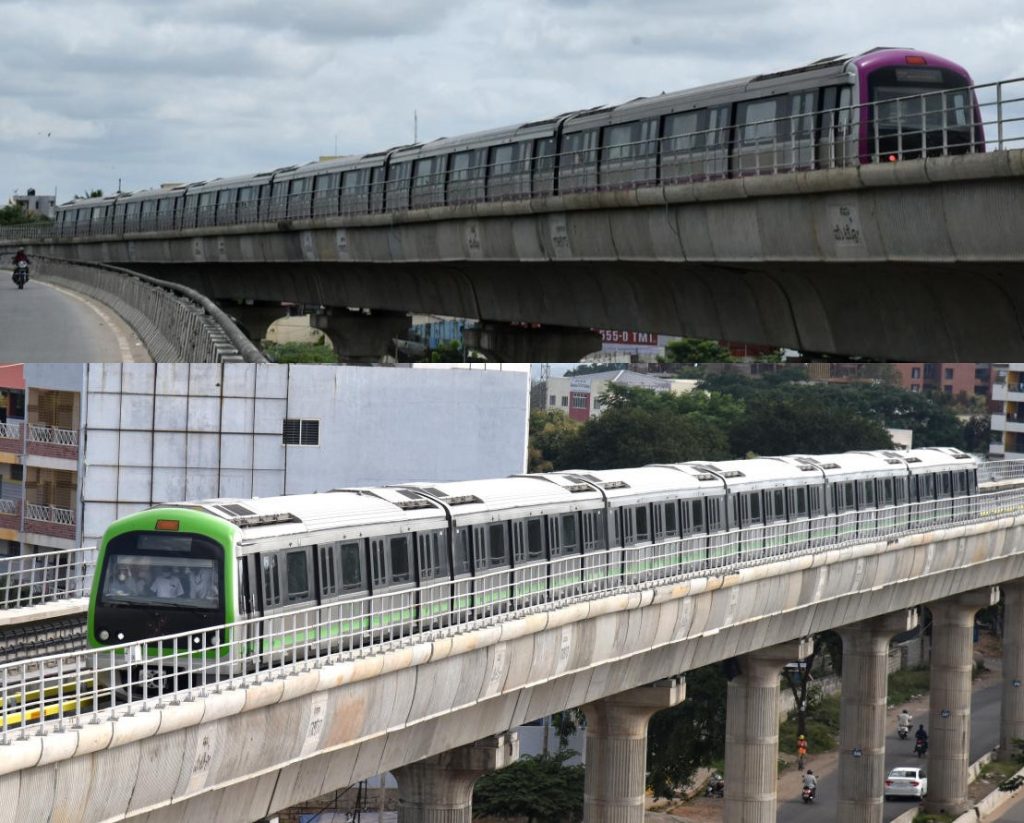Driverless Metro train for Electronics City revealed. Empowering Bengaluru’s Commute; trains likely to arrive from China by Oct.
Discover the groundbreaking developments in Bengaluru’s driverless Metro project, from train arrivals and indigenous manufacturing to cutting-edge technology and an expected operational timeline.
Driverless Metro: Yellow Line Expected by Q1 2024

Santosh4118, CC BY-SA 4.0
Revolutionizing Bengaluru’s Commute: The Driverless Metro on the Horizon
Meta Description: “Discover the groundbreaking developments in Bengaluru’s driverless Metro project, from train arrivals and indigenous manufacturing to cutting-edge technology and an expected operational timeline, all within a comprehensive 600-word article.”
Introduction
In the bustling metropolis of Bengaluru, where tech giants like Infosys and Biocon thrive, the city’s transit system is gearing up for a remarkable transformation. Bengaluru’s first-ever driverless Metro train is on the horizon, set to revolutionize the way residents and commuters navigate the urban landscape. In this article, we delve into the groundbreaking developments of this project, including train arrivals, manufacturing details, state-of-the-art technology, and the anticipated operational timeline.
A Chinese Connection for the Inaugural Phase
The project’s inaugural phase kicks off with the arrival of the first two sets of six-car trains (comprising 12 coaches) from China. This marks a significant departure from the norm, as Bengaluru Metro Rail Corporation Ltd (BMRCL) has traditionally sourced its trains from Bengaluru-based BEML. However, in this instance, the decision to collaborate with a different manufacturer is poised to bring fresh perspectives and advancements to the city’s transit system.
The bulk of the coaches, totaling 204, will be produced indigenously in India by Titagarh Rail, exemplifying the “Make in India” initiative’s essence. This dual approach reflects Bengaluru’s commitment to fostering both international cooperation and domestic manufacturing capabilities.
Anticipating the Arrival and Testing
The imminent arrival of these trains from China is expected by October, and a dedicated team of BMRCL engineers is currently stationed in China for the factory acceptance test (FAT). The FAT process plays a pivotal role in ensuring the seamless operation of train systems. Although there have been some challenges in terms of signaling and rolling stock interface, diligent efforts are being made to resolve these issues promptly. Once the rigorous FAT process is successfully completed, the first two trains will embark on a journey from China to Chennai port by October. Subsequently, they will be transported to Bengaluru via road, where comprehensive trial runs and testing will be conducted.
Driverless Technology and the CBTC Signalling System
One of the most groundbreaking aspects of the Yellow Line project is the incorporation of driverless technology, driven by the Communication-Based Train Control (CBTC) signalling system. Bengaluru Metro is making history by adopting CBTC, commonly referred to as “driverless technology,” for the first time. The existing Namma Metro relies on the DTG (distance-to-go) signalling system, featuring a two-and-a-half-minute time interval between trains. In contrast, CBTC has the potential to reduce train headway to less than 90 seconds, offering commuters a significantly enhanced travel experience.
To alleviate passenger concerns, BMRCL officials have decided to continue deploying loco pilots, ensuring both safety and a seamless transition into this new era of transit. Siemens Mobility, a leading player in the industry, is at the forefront of implementing the CBTC system and automated train technology for the Yellow Line.
The Siemens Mobility CBTC system will encompass electronic interlockings, an automatic train protection and supervision system, and a telecommunication system. This cutting-edge infrastructure will enable BMRCL to operate trains with a mere 90-second gap between them, ushering in a new era of transit efficiency and convenience.
Operational Timeline and Challenges
While the initial expectation was for the Yellow Line to be operational by 2021, a series of factors have led to a revised timeline. Delays in the supply of rolling stock, coupled with necessary procedures, have resulted in a new target date: Q1 2024.
To commence operations, a minimum of 8-10 trains from CRRC and Titagarh Rail are required. Once the train sets are received, an extensive period for testing and trial runs is anticipated. The Research, Design, and Standards Organisation (RDSO) in Lucknow, under the Union Railway Ministry, will oversee these critical tests, including oscillation and emergency braking distance trials. Additionally, spare trains will need to be available for maintenance purposes, as deploying the entire fleet for commercial operations is not feasible.
Conclusion
As Bengaluru prepares to welcome its first-ever driverless Metro on the Yellow Line, the city stands at the cusp of a transportation revolution. With international collaborations, indigenous manufacturing, cutting-edge CBTC technology, and a commitment to passenger safety, this project embodies the city’s progressive spirit. Although challenges have led to timeline revisions, the promise of a more efficient, convenient, and advanced transit system remains unwavering. Residents and commuters in areas such as Jayanagar, BTM Layout, HSR Layout, Electronics City, and Bommasandra Industrial Area eagerly await the day when they can embrace this transformative addition to Bengaluru’s public transportation network. Stay tuned for further updates as the Yellow Line project progresses toward its Q1 2024 operational goal.
Read the full article here Bengaluru: Prototype of driverless Metro train for Electronics City revealed; trains likely to arrive from China by Oct
DISCLAIMER: Any opinions and views expressed on or through the above content/blogs are those of the designated authors/bloggers and do not necessarily represent views of Shanders. Further, the Company does not make any warranty as to the correctness or reliability of such content.
 Back to all articles
Back to all articles




